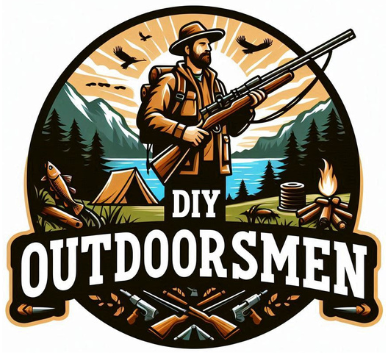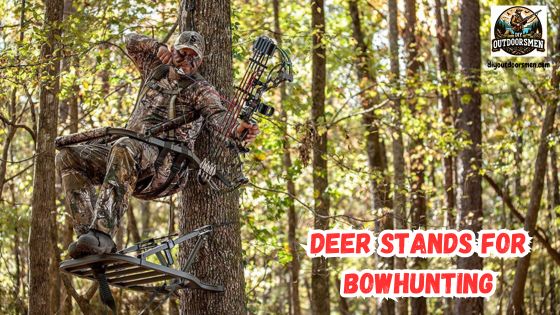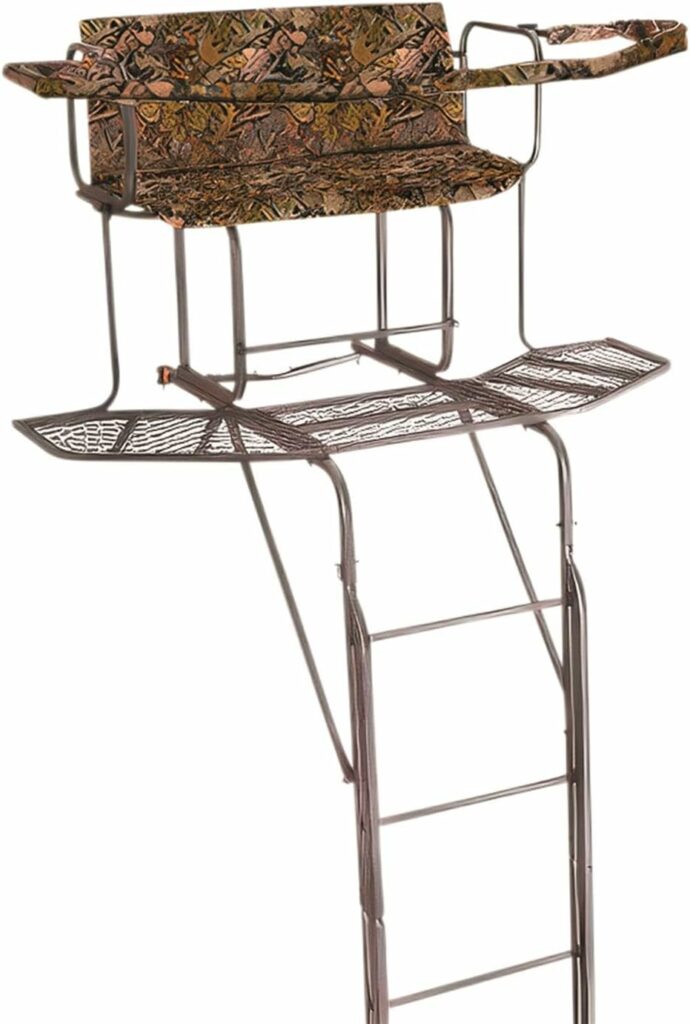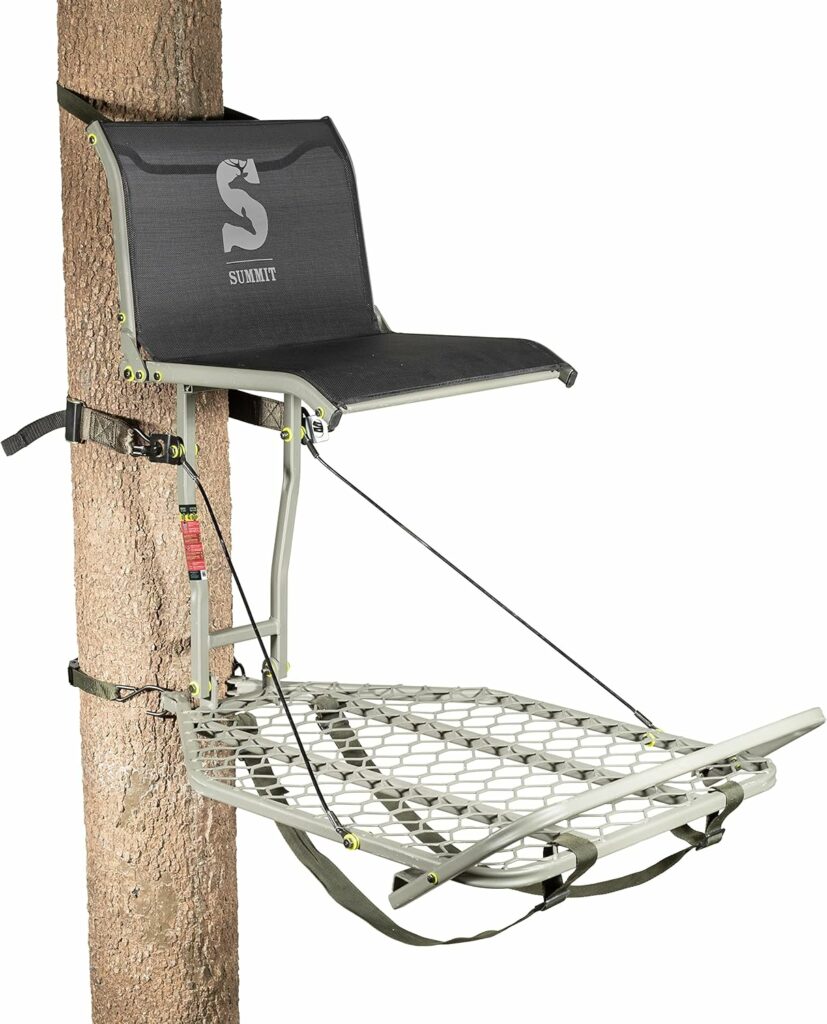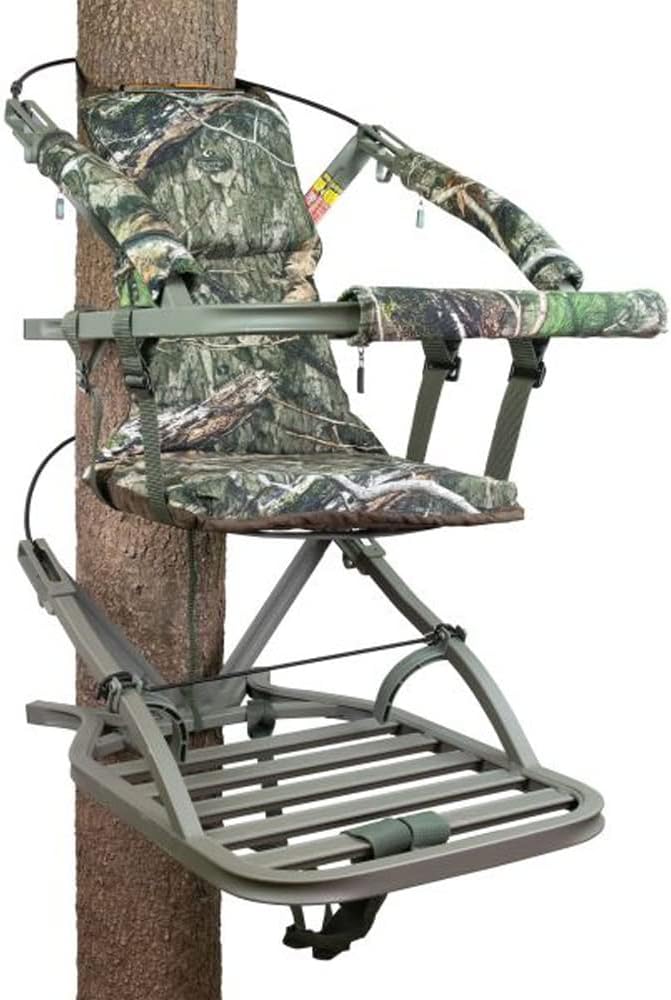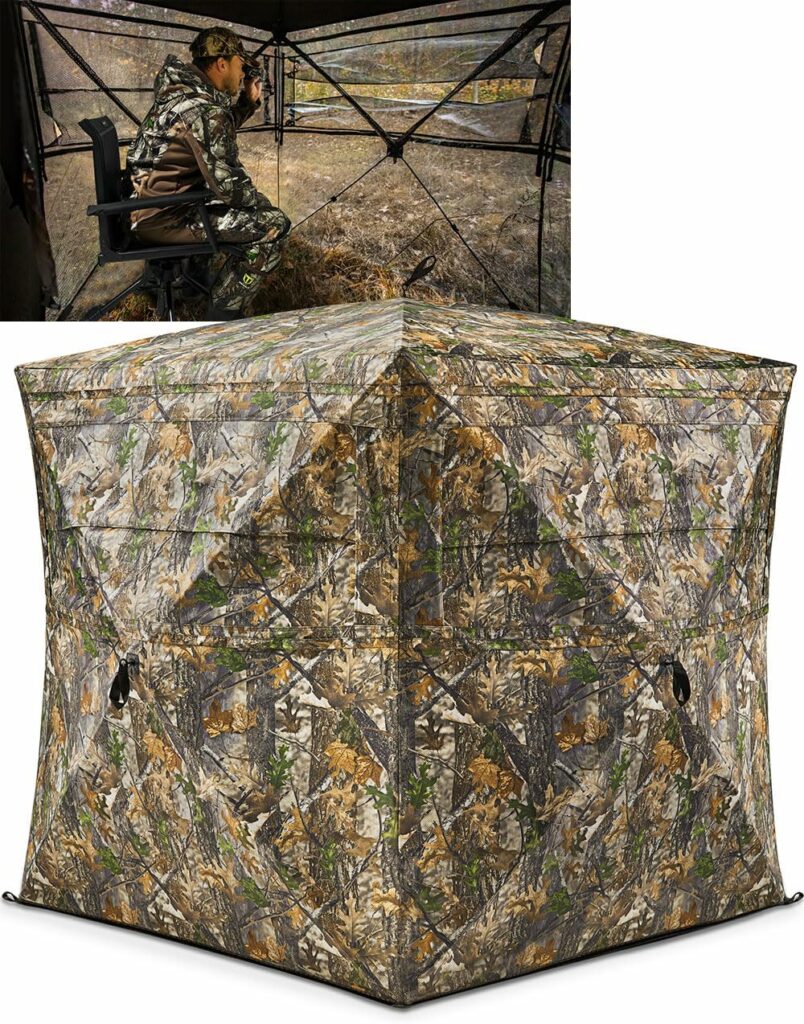Contents
- 1 Step 1: Choose an Ideal Location for Your Deer Stands
- 2 Step 2: Select the Right Tree for Stability and Visibility
- 3 Step 3: Proper Setup and Securing Your Deer Stands
- 4 Step 4: Step up Concealment and Control Your Scent
- 5 Step 5: Understand Different Types of Deer Stands
- 6 Step 6: Safety Best Practices and Maintenance of Your Deer Stands
- 7 Common Questions and Troubleshooting
- 8 Final Thoughts and Next Steps
Setting up an effective deer stands for bowhunting can improve your chances of a successful hunt. I have learned that paying attention to details when choosing your stand makes a big difference. In this guide, I share my experience and practical steps that help make your deer stand both effective and safe.
QUICK LOOK: Deer Stand Tips for Bowhunting
- Choose Location: Finding the right location is the very important first step toward setting up a deer stand that works for bowhunters. I focus on scouting areas where deer are known to travel and feeding areas frequently used by them.
- Choose the Best Tree: Choosing the right tree is almost as important as selecting the location. I search for sturdy trees that offer both stability and strong support.
- Setup and Secure: Once you’ve chosen the perfect location and tree, the next step is setting up your deer stand with proper installation and safety in mind.
- Concelment and Scent Control: Blending into your surroundings is a very important aspect of setting up effective deer stands. I focus on using camouflage techniques and scent control measures to keep myself undetected by deer.
- Choose Your Stand Type: There are several types of deer stands available, each with its own benefits and limitations. I have tried different models over the years and learned something from each one.
- Proper Stand Maintenance: Safety must always come first when setting up and using a deer stand. I stick to a routine of regular equipment maintenance and personal safety measures.
I explain how to choose a good location, the right tree, and the appropriate equipment, while taking into account factors such as wind direction, sunlight, and concealment. This guide covers safety practices, different types of stands, and troubleshooting common issues in a clear and methodical way.
Step 1: Choose an Ideal Location for Your Deer Stands
Finding the right location is the very important first step toward setting up a deer stand that works for bowhunters. I focus on scouting areas where deer are known to travel and feeding areas frequently used by them. A good spot is often located near deer trails, water sources, or alongside the edges of fields. I also make sure that the site naturally funnels deer along a predictable path. This strategy gives a boost to your chances of spotting deer moving through your chosen area.
Identifying Deer Trails and Travel Routes
Identifying deer trails is a skill that develops over time with regular observation and practice. I look for well-worn paths and natural funnels that deer use to enter and exit feeding or resting spots. Such routes often border the transition zones between thick cover and open fields and are sometimes found beside water sources that attract wildlife. Paying attention to signs like tracks or droppings can help you decide on a strategic location for your stand.
Understanding Wind Direction and Sunlight
Wind direction plays a key role in stand placement. I always choose positions where the prevailing wind carries my scent away from the deer rather than towards them. Positioning the stand so that I am sheltered between the approaching deer and the rising or setting sun also reduces the risk of being silhouetted. Since the interplay between wind and sunlight changes with the season, keeping track of local weather patterns is very important.
Securing a Hidden Yet Accessible Location
The ideal location should combine good concealment with accessibility. I prefer spots that offer natural cover, such as thick trees or bushy areas, yet allow me a quiet approach to the stand. A clear and unobstructed approach path helps me move silently when accessing or leaving the stand, ensuring that my presence does not disturb the deer.
Step 2: Select the Right Tree for Stability and Visibility
Choosing the right tree is almost as important as selecting the location. I search for sturdy trees that offer both stability and strong support. The tree must be healthy, with a robust trunk and large, strong limbs that can safely accommodate the weight of the stand and a person. Its natural shape should also provide a good, clear shooting lane. A tree that meets these criteria is essential for an effective and safe setup.
Evaluating Tree Health and Stability
I always examine potential trees for any visible signs of decay or weakness. A robust, live tree is less likely to break under stress, ensuring your stand remains secure over time. I look closely for signs of branch rot or any damage in the trunk and branches because choosing a healthy tree is a key safety measure.
Ensuring Clear Shooting Lanes
The tree should naturally offer a clear view of the approach area, free of heavy obstructions. I often choose a tree that opens directly to the route I expect the deer to travel. Occasionally, a few branches might need to be trimmed. Trimming should be done carefully and only when it does not compromise the tree’s overall integrity. A well-maintained shooting lane is essential for a safe and effective hunt.
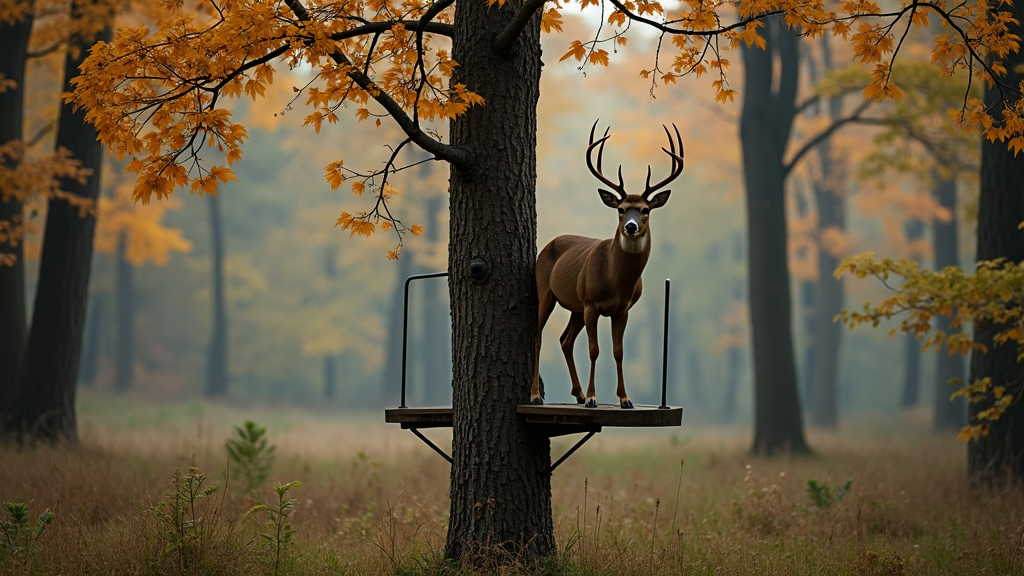
Access Considerations
Access is a vital factor when selecting a tree. I choose options that allow for quiet and safe climbing without excessive exposure. A tree with branches that provide secure footing makes the climbing process much smoother. Balancing both visibility and safe access can ultimately determine the overall effectiveness of your deer stand.
Step 3: Proper Setup and Securing Your Deer Stands
Once you’ve chosen the perfect location and tree, the next step is setting up your deer stand with proper installation and safety in mind. I pay particular attention to ensuring that the platform is installed at the correct height and that all attachments are securely fastened according to the manufacturer’s recommendations.
Choosing the Right Height
For optimal results when bowhunting, the height of your stand is very important. I usually position my stand between 15 and 20 feet above the ground, although this can vary based on the terrain and personal comfort. The chosen height should allow a clear view of the deer’s travel routes while reducing the likelihood of detection by ground-based animals or disturbances.
Securing the Stand to the Tree
Attaching the stand securely to the tree is absolutely critical. I use approved straps or bolts and always consult the manufacturer’s instructions for proper installation. A secure connection prevents unexpected slippage and helps the stand hold up under different weather conditions. I also believe in checking every attachment periodically to ensure that nothing becomes loose over time.
Trimming Branches and Creating a Clear Shooting Lane
After the stand is mounted, I inspect the surrounding area for any branches that might block my sightline. I trim any protruding branches carefully to clear a direct shooting lane, avoiding any shadows or unexpected obstacles that might reveal my location. It is crucial to balance trimming with maintaining the tree’s structure for long-term safety.
Step 4: Step up Concealment and Control Your Scent
Blending into your surroundings is a very important aspect of setting up effective deer stands. I focus on using camouflage techniques and scent control measures to keep myself undetected by deer. These efforts not only make the stand safer but also more effective overall.
Camouflage Techniques
To blend into the environment, I use natural materials or specially manufactured camouflage that matches the colors and textures of the surroundings. I often drape camouflage cloths around the stand to cover any signs of man-made structure that could give away my position. Avoiding bright or contrasting colors is essential in ensuring that the stand remains inconspicuous.
Scent Management
Scent control is a subtle, yet very important part of bowhunting. I use scent-eliminating sprays and separate my hunting clothes from everyday wear. Washing these clothes in scent-free detergent and using products designed to neutralize odors have proven to be effective practices. Paying close attention to scent management helps keep deer from noticing any unusual smells.
Using Natural Cover
Sometimes, the natural surroundings themselves provide added concealment. I position my stand next to clusters of low vegetation or background brush. This not only gives me an extra layer of hiding if necessary but also allows the stand to blend seamlessly with the forest. Using natural cover in combination with camouflage is a strategy that has worked well over time.
Step 5: Understand Different Types of Deer Stands
There are several types of deer stands available, each with its own benefits and limitations. I have tried different models over the years and learned something from each one. Knowing the variety of stands can help you choose the one that best suits your needs and hunting style.
Ladder Stands
Ladder stands offer a sturdy platform with built-in steps that let you climb up safely and securely. I appreciate the ease of use, as this type of stand is stable and convenient. This makes ladder stands a popular choice for many bowhunters who value both comfort and security on the tree.
Hang-On Stands
Hang-on, or bolt-on stands, are designed to attach directly to the tree. Their lightweight construction makes it easier to move between different setups. However, installing these stands requires careful handling, since there is no integrated ladder and you must rely on your own climbing skills to get in and out.
Climbing Stands
Climbing stands provide flexibility by allowing you to choose your preferred height in almost any tree. I like them because they let me position the stand in a variety of locations, even if the tree does not offer a fixed ladder system. Although they require more physical effort and usually mandate the use of a safety harness, climbing stands are a good option if you value versatility in your setup.
Ground Blinds
Pop up ground blinds are portable, easy to setup, and very effective. In areas where suitable trees are hard to find, ground blinds can be your solution. The disadvantage of ground blinds for bowhunting is that you are at eye level with your quary making drawing and shooting you bow without spooking the deer more difficult.
Understanding the differences between these deer stand types helps you decide which features matter most for your own hunting strategy. When you take the time to try different models in various settings, you build confidence and become better prepared for successful hunts.
Step 6: Safety Best Practices and Maintenance of Your Deer Stands
Safety must always come first when setting up and using a deer stand. I stick to a routine of regular equipment maintenance and personal safety measures. This section covers the safety protocols and upkeep routines that help ensure a long-lasting and secure hunting experience.
Using Safety Harnesses and Gear
Whenever I climb or work on my deer stands, I always wear a safety harness. This extra measure can truly make a difference by protecting me in case of a fall. Modern safety harnesses are simple to use and provide extra peace of mind. I also check that my climbing ropes and lifelines are in excellent condition before each use.
Periodic Equipment Inspections
Regular inspections of the entire setup are essential for preventing accidents. I routinely check straps, bolts, and all fastening systems for any signs of wear. A careful check before each hunt allows me to catch any potential problems early. Repairing or replacing any weakened components immediately is part of my standard maintenance routine.
Safe Climbing Practices
Maintaining proper climbing techniques is another very important safety measure. I use a dedicated route to climb, which minimizes unnecessary movement and noise. This careful approach not only improves my safety but also helps avoid disturbing the surrounding environment, keeping the deer unaware of my presence.
Common Questions and Troubleshooting
This section addresses common questions that arise during the process of setting up and using deer stands for bowhunting. Drawing from my own experience as well as insights shared by other hunters, I provide practical solutions and advice.
What if I Notice a Change in Wind Direction?
If the wind changes direction, I immediately reassess my position to ensure that it still carries my scent away from the deer. Keeping extra straps and having flexible tie-down options means I can adjust my setup quickly without too much hassle. Being aware of changing conditions is an essential part of staying safe and effective in the field.
How Do I Maintain a Clear Shooting Lane?
Maintaining a clear shooting lane requires regular attention. I routinely trim overhanging branches and remove any debris that might block my view. A well-kept lane offers an unobstructed sightline, reducing the chance of unexpected distractions that might alert deer. I always schedule these maintenance checks when the weather is calm so I can work carefully and deliberately.
What Should I Do if the Stand Feels Unstable?
If I ever sense that the stand has become unstable, I immediately stop using it and perform a thorough inspection. In some cases, it might be necessary to move to another tree or repair the attachments before using the stand again. I also contact the manufacturer’s support if I am uncertain about the correct way to fix the issue. Safety is never negotiable.
How Can I Minimize My Scent Further?
Beyond using scent control sprays, I store my gear separately and wash my hunting clothes with specially formulated detergent that cuts down on odors. I avoid prolonged contact with the tree, as it can transfer scents more easily. A layered approach to scent management keeps you stealthy and helps prevent alerting the deer.
Final Thoughts and Next Steps
Setting up effective deer stands requires detailed planning, attention to every little step, and ongoing maintenance. I have found that combining a good location choice, proper equipment, and stringent safety measures leads to a successful bowhunting experience. Every time I prepare my stand, I review these steps carefully so that the setup remains secure and effective.
Your Action Plan
To get started, I recommend taking the following steps one at a time:
- Scout for a location where deer naturally travel. Look closely at trails, water sources, and the edges of fields to decide on a promising spot.
- Select a sturdy tree that offers both a clear view and safe access. Inspect the tree carefully to ensure its health and stability.
- Securely install your deer stands, making sure they are fastened properly. Trim any branches as needed to create a clear shooting lane.
- Apply effective camouflage and use scent control methods to keep the stand hidden. Incorporate natural cover from surrounding vegetation whenever possible.
- Review the different types of deer stands and choose the one that best matches your hunting style. Experiment with different models to build confidence and familiarity.
- Always use a safety harness, perform regular maintenance checks, and adjust your setup when conditions change.
Paying close attention to these details will not only increase your overall safety but also boost your hunting effectiveness. Before your next hunting trip, take the time to review your setup and make any refinements based on recent weather patterns and environmental changes. Remember, each hunt is a learning experience, and every detail you fine-tune helps build a safer and more productive experience.
Every outing teaches you something new about nature and your own approach. Reflect on what worked well and consider improvements for next time. Patience, careful planning, and a willingness to adjust are all key to long-term success in the field. Bottom line: with thorough preparation and ongoing maintenance, your deer stands can become an invaluable asset on your bowhunting adventures.
Check Out Our Latest Articles:
- Understanding Deer Behavior To Improve Your Hunt
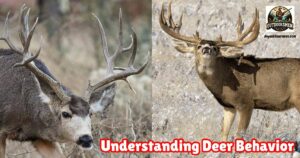
- Complete Guide On Tracking Game Animals
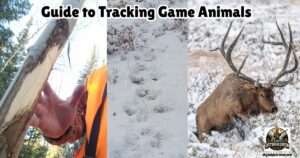
- DIY 4-Step Guide To Field Dressing And Quartering A Deer
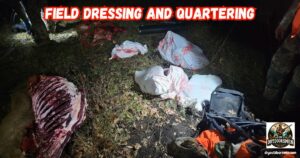
- Night Vision Binoculars For Nocturnal Hunting
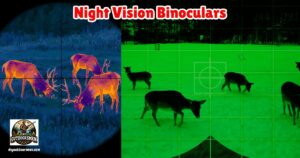
- The Science Behind Camouflage Patterns For Deer Hunting
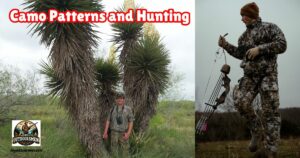
- Binocular Accessories For Hunters

As always, stay safe, enjoy the journey and please try to leave it cleaner than you found it. If you have any comments, questions, ideas, or suggestions please leave them in the comment section below and I’ll get back to you ASAP. You can follow us on YouTube: Man Art Creations for videos of our DIY Adventures.
P.S. – Thanks so much for checking out our blog we really appreciate it. Just so you know, we may receive a commission if you click on some of the links that appear on our site. This helps us keep our content free and up-to-date for everyone. We appreciate your support!
